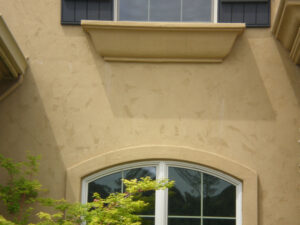HVAC Round Rock systems are essential for maintaining comfortable and healthy indoor environments in both residential and commercial spaces. Heating, ventilation, and air conditioning systems work together to regulate temperature, control humidity levels, and improve air quality, ensuring that occupants experience consistent comfort regardless of external weather conditions.

Over the years, HVAC technology has advanced significantly, leading to more energy-efficient and environmentally friendly systems that provide better performance and enhanced convenience. Understanding how HVAC systems function and the benefits they offer can help property owners make informed decisions when installing, upgrading, or maintaining these systems.
Heating systems are a key component of HVAC systems, particularly in regions that experience colder weather. These systems work by generating heat and distributing it throughout the building, maintaining a comfortable indoor temperature. Furnaces, heat pumps, and boilers are commonly used for heating purposes, with each system having its own advantages in terms of energy efficiency and performance. Modern heating systems are designed to operate with greater efficiency, reducing energy consumption and lowering utility costs. Programmable thermostats and smart controls allow users to adjust heating schedules based on occupancy and preferences, ensuring that energy is not wasted when the space is unoccupied. Consistent and effective heating not only improves comfort but also helps protect the building from damage caused by extreme cold, such as frozen pipes.
Ventilation plays a crucial role in maintaining indoor air quality and preventing the buildup of pollutants and moisture. Poor ventilation can lead to stale air, increased humidity levels, and the accumulation of airborne contaminants such as dust, mold, and allergens. HVAC systems are designed to circulate fresh air throughout the building, removing stale air and replacing it with filtered, clean air. Mechanical ventilation systems use fans and ductwork to move air, while natural ventilation relies on windows and vents to create airflow. Advanced ventilation systems incorporate air filtration and purification technologies to capture and remove microscopic particles, improving overall air quality and reducing the risk of respiratory issues. Proper ventilation also helps regulate humidity levels, preventing the growth of mold and mildew that can compromise indoor air quality and damage building materials.
Air conditioning systems provide cooling and dehumidification, creating a comfortable indoor environment during warmer months. Air conditioners work by extracting heat and moisture from indoor air and releasing it outside, lowering the temperature and humidity levels. Split systems, central air conditioning, and heat pumps are among the most common cooling solutions used in residential and commercial settings. Modern air conditioning systems are designed with advanced compressor technology and variable-speed motors, allowing them to adjust their output based on real-time cooling needs. This improves energy efficiency and reduces wear and tear on the system, extending its lifespan. Smart controls and zoning systems allow users to customize cooling settings for different areas of the building, further enhancing comfort and reducing energy consumption.
Energy efficiency is a major focus in modern HVAC design, as rising energy costs and environmental concerns drive the demand for more sustainable solutions. High-efficiency HVAC systems use advanced technology to maximize performance while minimizing energy consumption. Variable refrigerant flow (VRF) systems, for example, adjust the flow of refrigerant based on the specific heating or cooling requirements of different areas within the building. This allows for more precise temperature control and reduces energy waste. Geothermal HVAC systems use the stable temperature of the earth to provide heating and cooling, offering a renewable and highly efficient alternative to traditional systems. Improved insulation, energy-efficient windows, and smart building controls also contribute to lower energy use and enhanced system performance. Investing in an energy-efficient HVAC system not only reduces utility costs but also minimizes the building’s carbon footprint, contributing to environmental sustainability.
Proper installation and sizing of HVAC systems are critical to ensuring optimal performance and energy efficiency. An improperly sized system can lead to uneven temperature distribution, increased energy consumption, and premature wear and tear. Professional HVAC technicians assess factors such as building size, insulation levels, and climate conditions to determine the appropriate system size and configuration. During installation, technicians ensure that ductwork is properly sealed and that all components are correctly connected and calibrated. Proper installation helps prevent issues such as air leaks, poor airflow, and mechanical failures, ensuring that the system operates efficiently and reliably. Regular maintenance and servicing are also essential to maintaining system performance and longevity.
Maintenance tasks such as filter replacement, coil cleaning, and refrigerant level checks help prevent breakdowns and ensure that the system operates at peak efficiency. Clogged filters and dirty coils can restrict airflow and reduce the system’s ability to heat or cool effectively, increasing energy consumption and shortening the lifespan of the equipment. Professional technicians use diagnostic tools to identify potential issues and address them before they lead to major repairs or system failure. Seasonal maintenance, including preparing the heating system before winter and the cooling system before summer, helps ensure consistent performance and prevents unexpected breakdowns during peak usage periods.
Technological advancements have transformed the functionality and convenience of modern HVAC systems. Smart thermostats and building automation systems allow users to control temperature settings remotely using smartphones or voice commands. Machine learning algorithms analyze usage patterns and environmental conditions to automatically adjust system settings for optimal comfort and energy efficiency. Some HVAC systems are equipped with occupancy sensors that detect when rooms are empty and adjust temperature settings accordingly, further reducing energy consumption. Air quality monitoring systems provide real-time data on indoor air quality, alerting users to changes in humidity levels, pollutant levels, and ventilation rates. These smart features not only improve comfort and convenience but also enhance energy savings and system performance.
HVAC systems play a vital role in improving health and well-being by maintaining a stable and comfortable indoor environment. Consistent temperature and humidity control help prevent the growth of mold and bacteria, reducing the risk of respiratory issues and allergic reactions. Air filtration systems remove allergens, dust, and other airborne particles, creating a cleaner and healthier indoor environment. Proper ventilation reduces the concentration of indoor pollutants and ensures a steady supply of fresh air, improving cognitive function and overall comfort. In commercial and institutional settings, maintaining a comfortable and healthy indoor climate enhances productivity and supports the well-being of occupants.
The financial investment in an HVAC system is balanced by long-term savings in energy costs and improved comfort. High-efficiency systems may have a higher upfront cost, but the reduction in energy consumption and maintenance costs often results in a significant return on investment over time. Incentives and rebates for energy-efficient upgrades further reduce the financial burden and encourage the adoption of advanced HVAC technology. Proper maintenance and regular servicing extend the lifespan of the system, delaying the need for costly replacements and repairs. Investing in a high-quality HVAC system increases property value and enhances the overall comfort and functionality of the building.
Environmental sustainability is a growing priority in HVAC system design and operation. The use of environmentally friendly refrigerants, improved insulation materials, and renewable energy sources reduces the environmental impact of HVAC systems. Energy-efficient systems help reduce overall demand for fossil fuels and lower greenhouse gas emissions, contributing to a more sustainable energy future. Advances in HVAC technology, such as heat recovery systems and solar-powered HVAC units, further enhance the environmental benefits of modern systems. By adopting sustainable HVAC solutions, property owners can reduce their carbon footprint while improving indoor comfort and energy efficiency.
HVAC systems have become an integral part of modern building design, providing essential climate control and air quality management. The increasing demand for energy-efficient and environmentally friendly solutions continues to drive innovation in the HVAC industry. Smart technology, renewable energy integration, and advanced system design are shaping the future of HVAC systems, offering greater efficiency, convenience, and environmental benefits. By understanding the key functions and advantages of HVAC systems, property owners can make informed decisions that enhance comfort, reduce energy costs, and support environmental sustainability. The evolution of HVAC technology reflects the ongoing commitment to creating healthier, more comfortable, and more efficient indoor environments.

